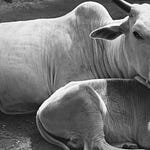We are on the last day of our segment on "svadhyaya" or self-study, one of the 5 Niyamas or internal vows of a yoga student. Self-Study means understanding of your past, your surroundings, your nature and your intentions.
As we are the observers in this yoga experiment, it is important to learn about the lens through which we see - and feel - our lives. In today’s meditation challenge, we focus on mapping the grooves of our samskars, learning to read the story of us.
In Day 2, Meeting Samskars with Sun Salutations, we reviewed samskars - or sankaras - knots of craving and aversion that live where the mind and body meet. Another way of looking at samskars are like the grooves that water leaves behind. What begins as a trickle of water, becomes a stream and then eventually a canyon.
Imagine that each thought is like a trickle of water. The energy of craving or aversion grooves down into the substrate of the mind and body, leaving deeper and deeper grooves with time and repetition. Over time, the grooves become well-established in our minds and bodies, in the same way that rivers become well-established over land.
S. N. Goenka described the concept of reincarnation and samskars in this lovely way. At the end of the day, what do you remember most? The two or three most impactful or memorable things. At the end of the week? The two or three most impactful things. At the end of a year? Two or three things. At the end of a lifetime? Two or three things.
At the ends of our lifetimes, most of us are left with a couple Grand Canyon-size grooves in our psyches. When the energy of the next life rushes in, like a torrent of water, it rushes down and splashes up from these canyons enough energy to start the imprint for the next life. In this theory, we come into our lives - with the deepest samskars of our past life - already present in our minds and bodies.
We might experience these in-born samskars in the personality we come into the world with, talents, affinities or phobias. Regardless of how we get them, from a past life or this one, eventually - we all end up with a map of our own samskars.
Depending on our map, we see and experience the world in different ways. One person may experience the exact same amount of rain, and have a flood; another has a drought; another has wonderfully irrigated fields; while another might barely notice.
So, let’s take a couple moments to begin to visualize the terrain of our psyches. Gently closing your eyes, find an easy seat. Begin to steady the mind by focusing on breath - the natural rise and fall of the belly. Noticing the hands, fingers; feet, toes.
We’re going to bring in some rainy weather, and watch where the water goes. Call in to your mind’s eye the memory of an experience with some emotional charge - but not too much. Maybe an odd traffic incident - or a strange interaction with a neighbor.
As you recall this incident, where do you begin to feel things in your body? What thoughts or emotions are arising? See if you can remain an observer, and keep some distance from any narratives that might arise.
Bring your awareness to where you feel the most intense sensations in your body. Perhaps it was in the chest, the belly, or maybe the shoulders. Notice if your body is having a reaction - like curling in, shallow breath or shoulders crunching. Notice the quality and intensity of the sensation.
If it’s very painful and drawing you in, shift your awareness to the edges of the sensation, until you’re able to notice with some distance. Notice any thought or emotion sensation that might arise. Notice where in your body you might feel sensation, and shift focus to the next most intense sensation.
As before, notice the quality and intensity of the sensation. Is it pin pointed and intense, or spread over a large area and dull? Is it a mix of pleasant or exciting sensation, mixed with heavy or unpleasant sensation? Notice the qualities. Notice if your body is having a reaction - like curling in, shallow breath or shoulders crunching.
Once again, if it’s very painful and drawing you in, shift your awareness to the edges of the sensation, until you’re able to notice with some distance. Notice any thought or emotion sensation that might arise. Notice where in your body you might feel sensation, and shift focus to the next most intense sensation. And so on.
In this way, you can gently map and follow the grooves of samskars in your mind and body. Like the ancient sea-faring explorers, you can begin to draw maps, and slowly gain a deeper understanding of how you see and experience the world.
If you felt tempted to dive into the painful sensations, you are not alone! Like in massage, if you have a very deep trigger point - a knot of muscle and accumulated fibrous connective tissues - it’s going to be very painful.
It can be tempting to want to “get rid” of the muscle knot by digging your thumbs right into the center and trying to push it out - but if any of you have tried that with a muscle knot or a cramp - you know that method does not work! It’s the same way with the knots of samskars in our minds and bodies. Just like in massage, we first map and work the edges, before making our way in - and even then, carefully and compassionately. There’s a reason after all, that these knots are there.












